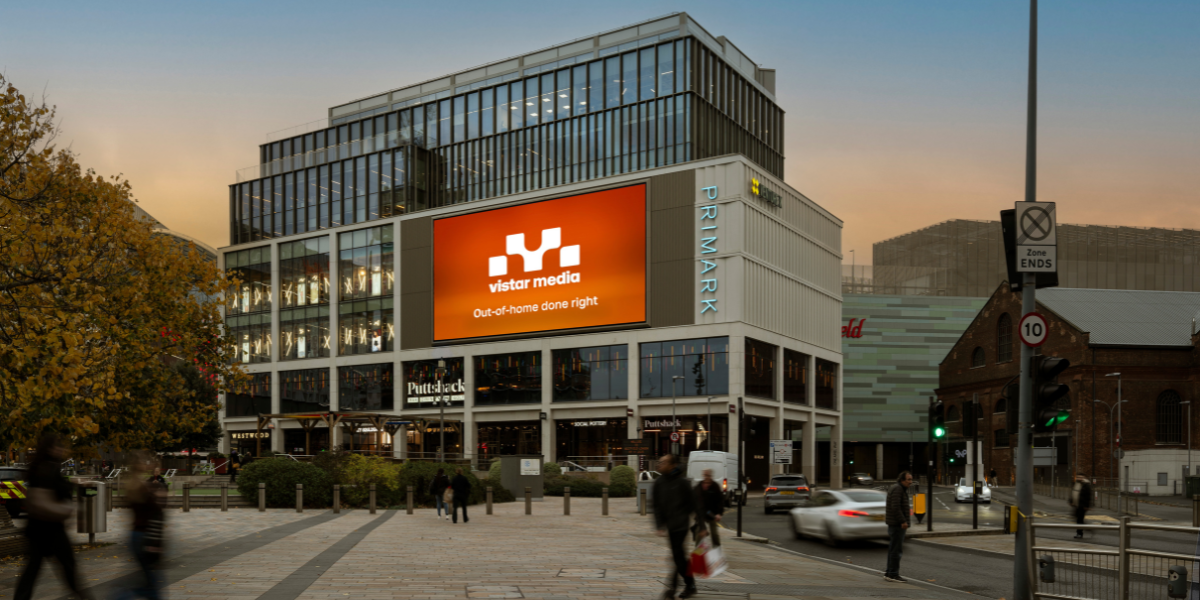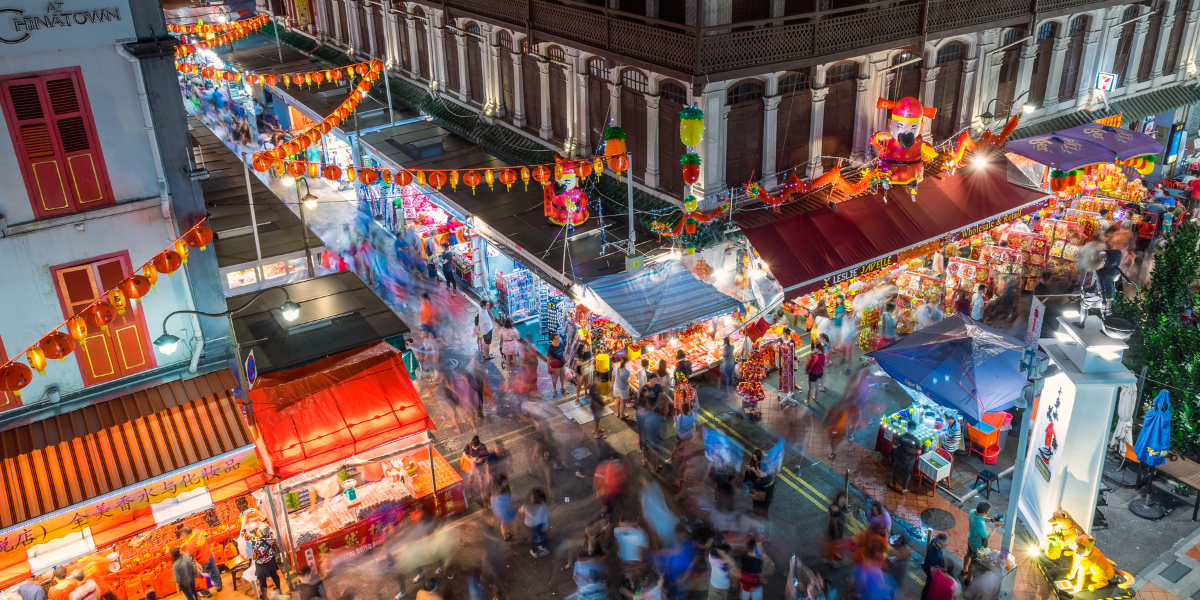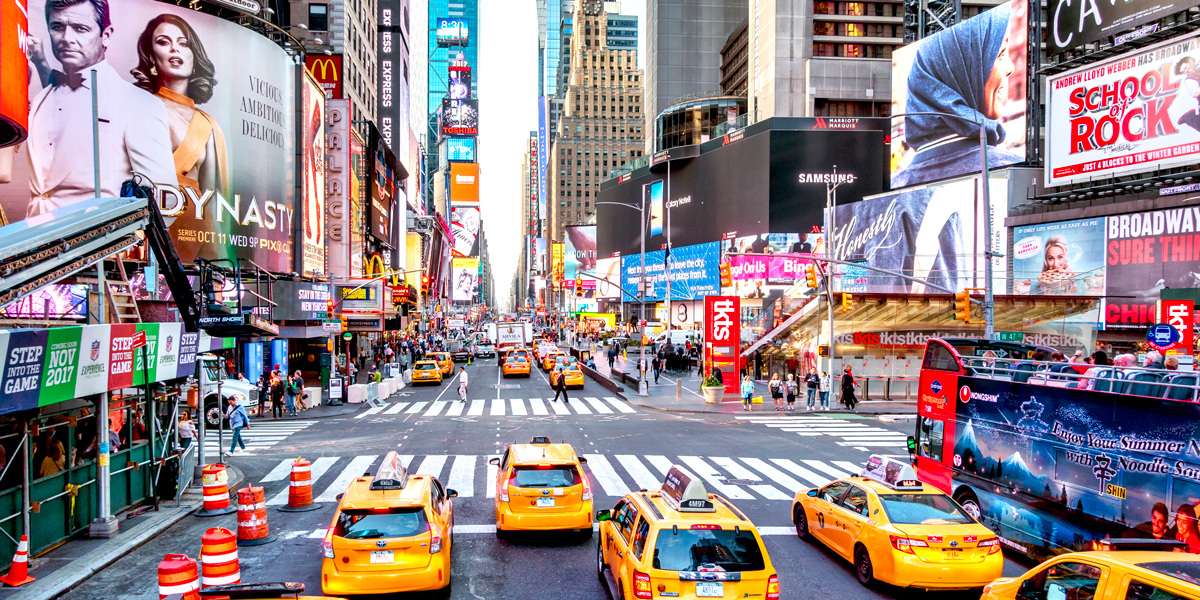
Digital out-of-home advertising, or DOOH, is the tech-savvy counterpart of traditional outdoor media. Think beyond Times Square billboards — we're talking about hundreds of thousands of outdoor ad opportunities that can be made in real-time, with the same targeting abilities as other digital channels.
DOOH campaigns inform, entertain and attract. They can also change the course of someone’s afternoon. In this blog, we are introducing you to the world of DOOH, exploring where to use it, how to make it matter and what’s trending in the industry.
From traditional to digital out-of-home signage
Out-of-home (OOH) advertising has traditionally relied on static images like posters and printed vinyl. However, the introduction of digital OOH advertising has ushered in a new era for this advertising channel.
The dynamic nature of digital screens, such as digital billboards, combined with programmatic targeting, has opened the door for more creativity, visibility and opportunities for brands to connect with consumers.
While traditional out-of-home advertising still holds its ground for impactful, brand-boosting campaigns, DOOH ads take the lead when it comes to delivering more targeted and measurable results. The winning strategy? Combining the consistent messaging of traditional out-of-home with the flexibility and immersive experience DOOH provides.
Where your ads can make the most of the moment
One of the best parts of DOOH is that it creates the perfect balance between captivating your audience without feeling invasive. When done right, these ads work because they don't feel like ads.
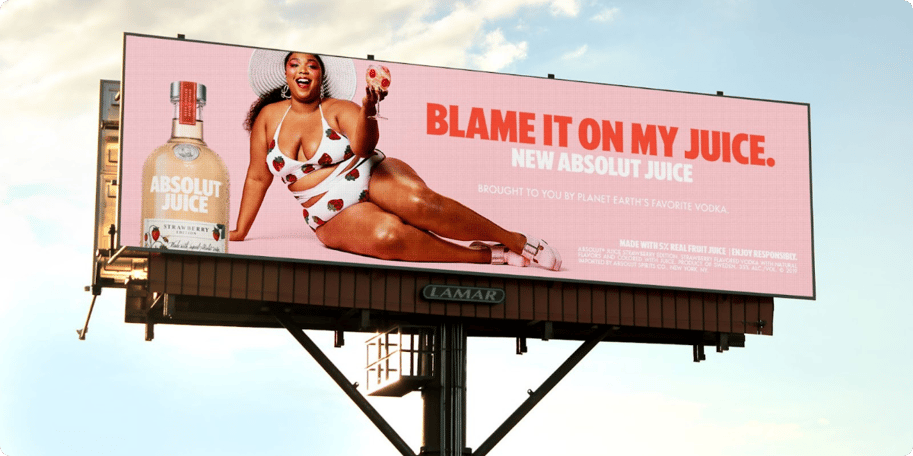
Create a buzz by advertising in high-traffic areas
Large screens placed in areas that naturally attract a crowd are the powerhouse of DOOH. They are the larger-than-life screens that are the cornerstone of the medium. These screens appear in various shapes and locations and have the power to create memorable moments and leave a lasting impression on your audience.
Typical large-format screens include:
- Highway billboards
- Urban panels
- Transit screens
- Bus shelters
- Outdoor digital walls
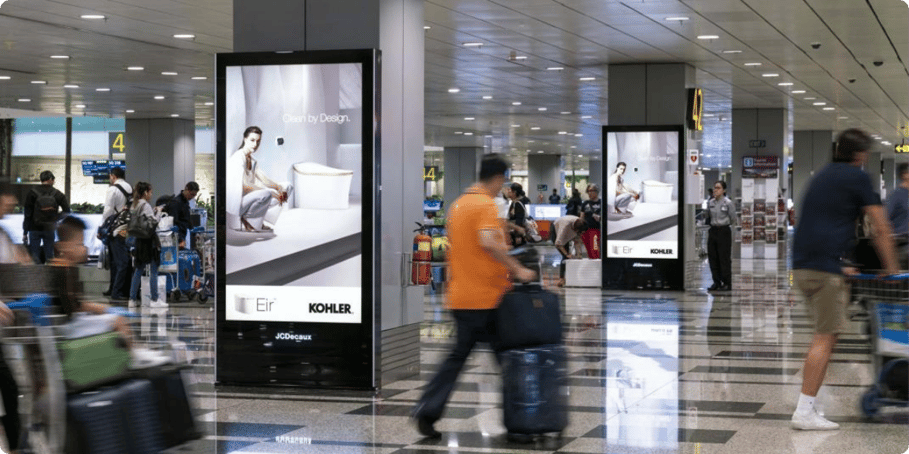
Place your message when and where it’s most relevant
Become a seamless part of your consumer's day by placing your brand where they naturally go without it feeling distracting. This is where place-based media comes in. Within your campaign strategy, it acts as your brand’s storyteller, crafting messages tailored to specific locations when and where it’s relevant, whether it's an outdoor advertisement or one inside a shopping center. Let your brand's story unfold in the most captivating way possible, painting moments that linger and resonate with your audience long after they've walked away.
Place-based locations include:
- Office buildings
- Malls
- Gas stations
- Gyms
- Restaurants
- Bars
- Universities
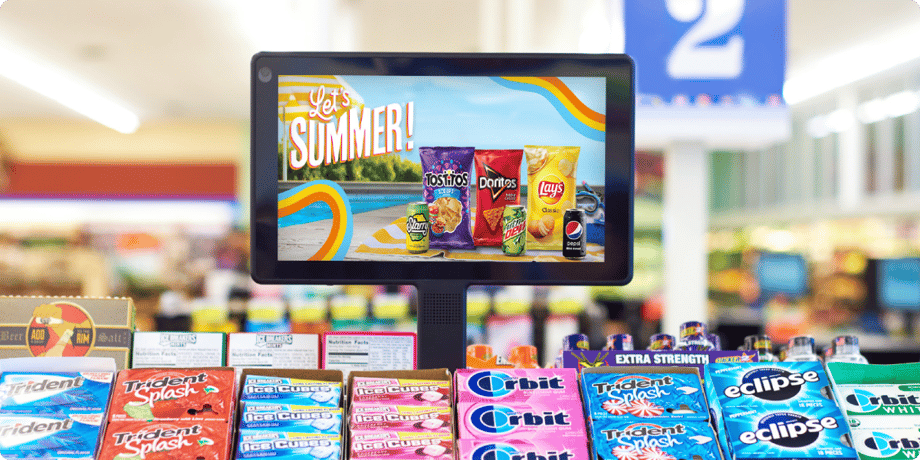
Influence shoppers at the point-of-purchase
Influence shoppers at the moment buying decisions are made, at the point of purchase (POP). Whether in the aisle or at the register, 70% of buying decisions are determined in-store. With every ad, your brand’s narrative unfolds at this critical moment, tipping the scales in your favor
Point–of-purchase screens are available in:
- Big box retailers
- Convenience stores
- Grocery stores
- Liquor stores
- Pharmacies
How to target your audience
DOOH allows you to hit the bullseye every time with tailored content based on location, time, weather and more. Targeting opportunities include dayparting, geotargeting and point radius/POI targeting. Let’s break it down.
 Dayparting: perfect timing
Dayparting: perfect timing
Using time-based data, adjust your content based on the time of day. For example, promote breakfast items in the morning and dinner specials in the evening. In life and advertising, it’s all about timing!
 Geotargeting: local appeal
Geotargeting: local appeal
Display location-specific content on digital screens to align with the interests and needs of the audience around it. Your message becomes hyper-relevant, resonating with the community you're targeting.
 POI Targeting: surround and conquer
POI Targeting: surround and conquer
Surround consumers with your message around a key location. Imagine serving an ad for an energy drink around a live sporting event, conquering an entire area relevant to your brand!
For a more in-depth look at all of DOOH’s targeting capabilities, check out our guide: Audience and Targeting Strategies for DOOH.
How to make your message stick
Personalize your message through automation
Beyond targeting, DOOH can also tailor the content being served. Imagine your ads seamlessly adapting to the place and the moment, changing messages and images based on data. That’s the magic of dynamic creative. From displaying the nearest store locations across different markets to integrating live countdowns for regional product launches. The cherry on top? It’s all done automatically; one ad template, unlimited variations.
Personalize your content by including:
- The nearest store location
- Live sports scores or game details
- Local weather conditions
- The day of the week & time of day
- Any countdowns (or count-ups)
- New product promotions
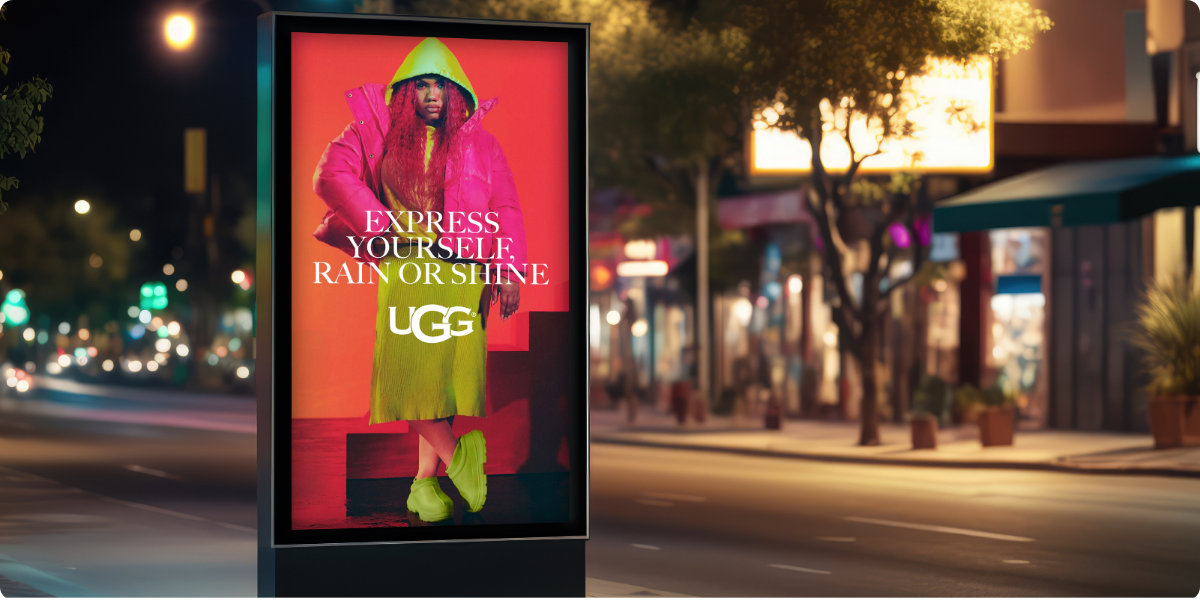
Use weather marketing to keep your ad relevant
The weather isn't just a small-talk topic; it's a silent influencer in our choices and attitudes as consumers. Using weather triggers, you can deliver creative messaging that responds in real-time to the weather around the ad.
Imagine passing by a digital advertisement for sunscreen on a cold, rainy day. It doesn’t really speak to the moment. Matching your ad creatives with the right weather helps your ads feel like a natural part of the surroundings and lets you speak with direct relevance to your audience’s day.
Engage audiences with interactive screens
You can take the immersive nature of DOOH to the next level by using interactive screens to have direct interaction with your audience. It gives you an opportunity to break out from a cluttered digital environment and differentiate yourself from competitors.
Interactive digital screens aren’t just attention-grabbers, they can also gather real-time data in the real world. It's like having a conversation with your audience, making them more likely to buy and connect with your brand.
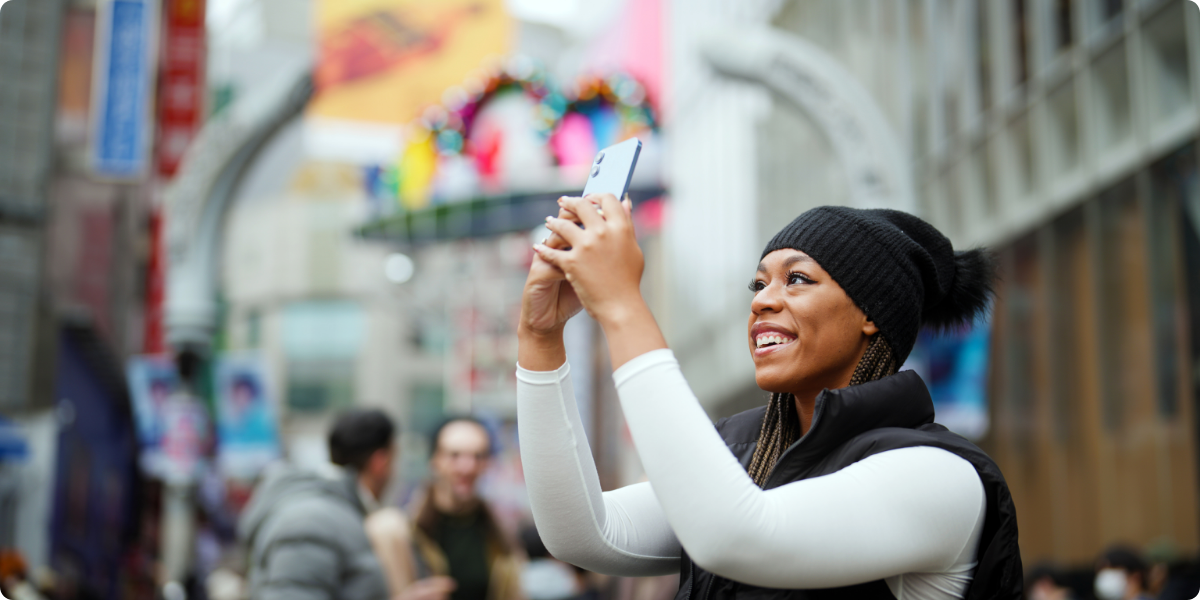
Using DOOH in an omnichannel approach
It's no secret that the competition for consumer attention keeps getting fiercer. With millions of businesses launching each year, standing out and grabbing audience attention in mere seconds becomes more and more difficult.
That's why building a strong omnichannel marketing strategy has become essential. More and more brands are integrating DOOH into their media mix. With programmatic technology, advanced data capabilities, and creative innovation, the channel helps you expand your reach beyond online channels and create a consistent presence both online and offline.
Combining DOOH with mobile marketing
When you combine mobile and programmatic DOOH, you not only reach your audience wherever they are, but you also build on the connections you've already established. This creates additional touchpoints that reinforce your brand message, making it even more effective.
Imagine capturing the attention of consumers with a creative DOOH campaign, fueling brand awareness and consideration for your brand. Then, seamlessly transitioning to mobile, where you can continue the conversation and drive a specific action.
Measuring your DOOH campaign
As a channel, DOOH has the same measurement capabilities as other digital channels, which is one of the benefits of programmatic advertising technology. When launching a DOOH campaign through a DOOH demand-side platform (DSP), there are five key reporting metrics accessible to users:
- Impressions: Ad impressions calculate the total number of instances an advertisement is served, including the spend-per-hour to reach those impressions.
- Market and venue type: Provides insights into the various locations and types of screens where the advertisement appears.
- Data costs: The amount associated with acquiring third-party data for audience targeting.
- Revenue tracking: The overall amount spent throughout the campaign.
Media owner and venue location: Information about the media owners and specific locations accessed through the DSP.
Exploring more sophisticated measurement studies can help you gain a richer understanding of your campaign's effectiveness beyond standard performance metrics.
Through a brand study, you can uncover your audience's nuanced perceptions and attitudes toward your brand. You can also analyze foot traffic patterns to gain a deeper understanding of your campaign's physical impact to drive into online engagement metrics to measure its resonance online.
Trends to watch
Quality over quantity: ensuring your brand shines right
When it comes to ad investments, confidence is priceless. With countless screens out in the world, finding the perfect match for your brand can be tricky. That's where Vistar Verify comes in – ensuring your brand is displayed on premium, high-quality screens.
Vistar Verify focuses on three core elements:
- Environment: The quality of the location and audience prioritizes cleanliness, brand safety, and reaching a desirable audience.
- Presentation: The screen is well-designed and placed in visible locations.
- Signals: Checks the reliability of data, including up-to-date impression data and precise operational details.
Retail media: a shopper's paradise
Brands are now showing up in stores where people shop, not just on TV or online. The growth of retail media presents a huge opportunity for brands to connect with consumers in new ways. With more DOOH inventory available, brands can place advertisements on digital signage and screens located in and around retailers, creating an immersive experience for shoppers.
DOOH advertising benefits that make a difference
Digital out-of-home advertising companies are making waves in the advertising world, and for good reason. With an impressive 82% ad recall, it has become the fastest-growing advertising channel, boasting a remarkable 24.2% growth in 2023. By 2027, it is predicted to dominate 45% of total OOH advertising spend.
So what are you waiting for? Start today — It's not just about catching eyes, it's about making moments that stick and driving the right results.

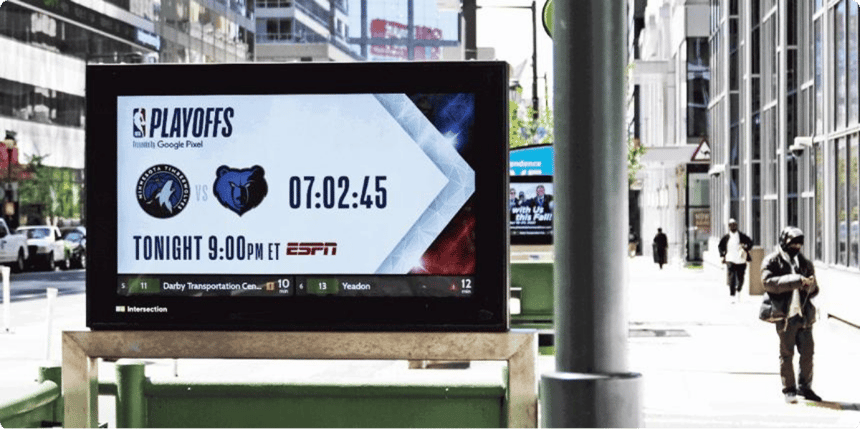
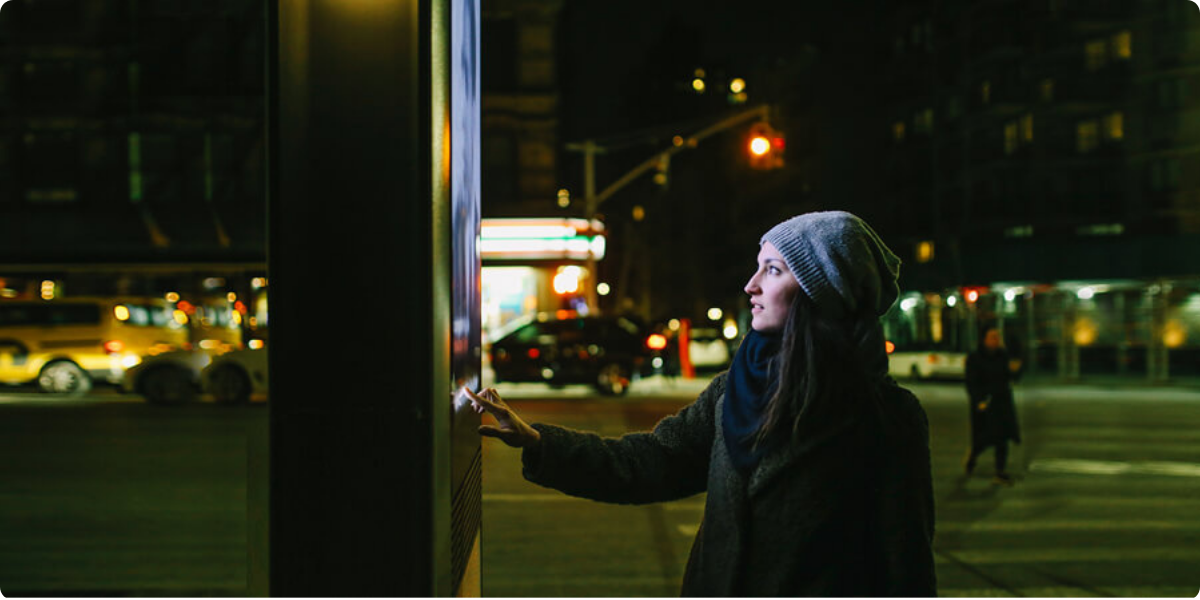

%20(1).png)
